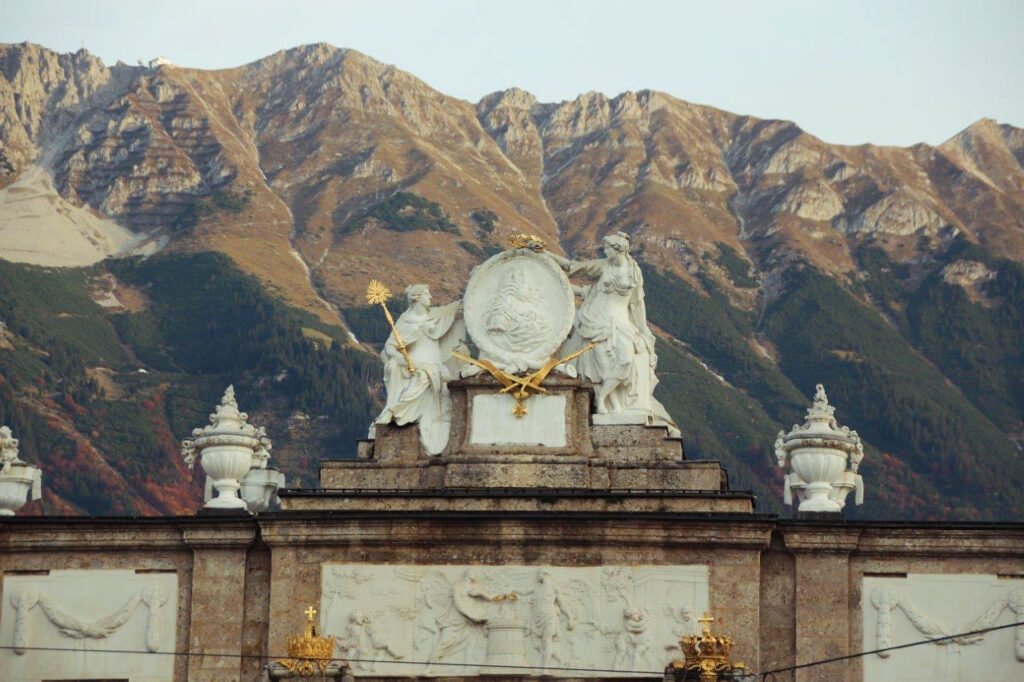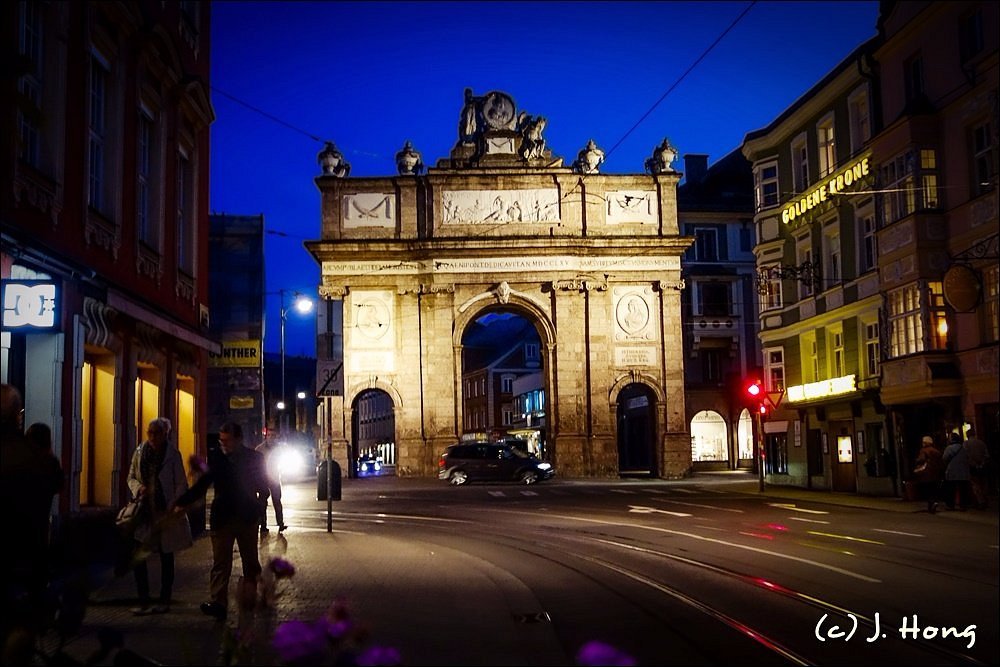Standing proudly at the edge of Innsbruck’s Old Town, the Triumphal Arch (Triumphpforte) is one of the city’s most iconic historical landmarks. This elegant structure is more than just an architectural marvel; it is a symbol of celebration, history, and imperial grandeur. Whether you are a history enthusiast, architecture admirer, or casual traveler, visiting the Triumphal Arch offers insight into the rich cultural heritage of Tyrol.
A Glimpse into History
The Triumphal Arch was constructed in 1765 by Emperor Francis I, husband of Maria Theresa, to commemorate two major events: the Tyrolean region’s integration into the Habsburg Empire and the marriage of their son, Leopold II, to Infanta Maria Ludovica of Spain. Interestingly, the arch also bears the mark of both joy and mourning. While it was built to celebrate a wedding, the death of Emperor Francis I shortly before the festivities led to the inclusion of a mourning side, creating a unique monument that blends celebration with remembrance.
This dual-purpose design makes the Triumphal Arch not only a visual delight but also a fascinating historical artifact, reflecting both the personal and political aspects of the Habsburg dynasty.
Architecture and Design
The Triumphal Arch is a fine example of Baroque architecture, characterized by its elegant proportions, intricate stucco work, and decorative sculptures. Standing at approximately 18 meters tall, the arch features two contrasting sides: one adorned with joyous symbols of celebration, and the other reflecting the somber tone of mourning.
The celebration side includes festive motifs, coats of arms, and allegorical figures, symbolizing the power and unity of the Habsburgs. In contrast, the mourning side is simpler and more restrained, with funerary symbols honoring Emperor Francis I. This unique duality makes the arch a compelling subject for photography and historical exploration.

Visiting the Triumphal Arch
The Triumphal Arch is conveniently located in Innsbruck’s city center, making it easily accessible for pedestrians exploring the Old Town. Its central location allows visitors to combine a visit to the arch with nearby attractions, such as the Golden Roof (Goldenes Dachl), Hofkirche, and local cafés.
Visitors can appreciate the arch from street level, capturing its impressive façade against the backdrop of the Nordkette Mountains. For history enthusiasts, guided tours provide detailed stories about the Habsburgs, the events leading to the construction of the arch, and the symbolism embedded in its design.
Cultural Significance
Over the years, the Triumphal Arch has become a symbol of Innsbruck and an enduring part of the city’s cultural landscape. It has witnessed centuries of celebrations, parades, and events, serving as a reminder of Tyrol’s historical connection to the Habsburg dynasty. Today, it continues to attract tourists and locals alike, offering a tangible link to the region’s past.

Tips for Travelers
The best time to visit the Triumphal Arch is spring, summer, or autumn, when the surrounding streets and nearby plazas are lively and the mountain backdrop is clear. Photography enthusiasts will find opportunities for stunning shots, especially during sunrise or sunset when the lighting highlights the Baroque details of the arch. Comfortable walking shoes are recommended for exploring the surrounding Old Town and nearby attractions.
Nearby Attractions
While visiting the Triumphal Arch, travelers can enjoy Innsbruck’s vibrant Old Town, with its colorful buildings, boutique shops, and traditional Tyrolean restaurants. The Golden Roof, Hofburg Imperial Palace, and Alpenzoo are all within a short distance, making it easy to plan a full day of sightseeing in the city.
Conclusion
The Triumphal Arch of Innsbruck is more than just a gateway—it is a monument of history, art, and cultural memory. Its dual symbolism of celebration and mourning offers a fascinating insight into Tyrol’s past, while its Baroque architecture captivates visitors with elegance and detail. Whether you are exploring Innsbruck for history, photography, or simply enjoying a walk through the Old Town, the Triumphal Arch stands as an unforgettable landmark that connects the city’s present with its rich imperial heritage.





















